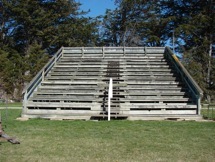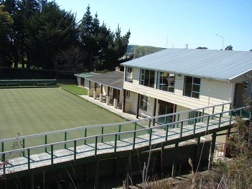Kakanui Floods


Kakanui Floods




By hayley l.
© Hayley L.
Maheno School 2007


Introduction
There is a mighty river going through Maheno called the Kakanui. It has had some major floods in the past.
I chose this topic because I found it very interesting and I wanted to learn all about it.
The bowling green at Maheno a day after the flood in July 30th 2007.
Photo courtesy of Hayley.





*






Maheno rugby ground grand stand filled with Sheep and Rabbits.
Photo courtesy of North Otago Museum.
Maheno road under water.
Photo courtesy of North Otago Museum.
State highway 1 bridge under water.
Photo courtesy of North Otago Museum.
Maheno township under water
Photo courtesy of North Otago Museum.
My Speech 2007
Can you imagine waking up and having water up to your knees and ducks in the kitchen?
Well here's what I think.
Good afternoon judges, ladies and gentleman, boys and girls.
Today I am going to tell you what I think we should do to stop floods.
Kakanui river is a natural treasure in this area with huge potential for power generation even while in flood. The floods have done a lot of damage. Like on Sunday, 3rd February 1868. It was a day of grey skies heavy with threat.
In the early evening it began to rain. At first it was a thin drizzle and then a steady downpour. This continued all night and throughout Monday. Rain and wind were unceasing. At Maheno the water from the Kakanui rose four feet on the second store of the flour mill. The miller and his family and others got away by walking along the top of a fence, supporting themselves with poles. The fence collapsed a few minutes later. This was the disastrous flood that calmed nine lives near the Waiareka creek at Totara.
Augusta Gordon, the first pupil teacher at Maheno and John Flamanck were drowned when being taken by a dray over the flooded Island Stream on the way to school.
Another flood memory was when John Newlands had built his hut on the land where the bowling green now stands. The water rose on the evening of February 3rd and not realising the danger he and Mrs Newlands changed into their old clothes and went to rescue their ducks. The flood increased so quickly that after carrying a child visitor to safety they were able to get their own children up the bank nearby. They managed this only because they were washed against a fence and were able to clamber along it. The house and all their belongings were swept away.
Again there was another flood in 1892, after a rainy Sunday February 11th the streams over-flowed. Next morning the only ground showing above the water was just south of the viaduct and this was crowded with sheep with rabbits on their backs.
Although the river floods very rarely the strength of the flow would generate enough power using a small discrete dam to supply the local population. The constant and low cost of electricity might encourage more people to live in this area.
So that is why I think we should build a small discrete dam.
One of the things that people did to help was that two people got a bulldozer and pulled cars across the river and helped put flood banks around houses. They also helped save animals.
One of the things that the Otago Regional Council did to help was install flow meters on the Kakanui River. These are sited at Five Forks, Mill Dam (Maheno) and McCones Farm.(Kakanui).
As well as recording the rivers flow, it also has a flood warning system. The first warning bell goes off when the river reaches 50 cumecs. The second warning bell goes off when the river reaches 96 cumecs. This has been a great help for farmers giving them time to remove stock from low lying land. Civil Defence can also monitor the river level from the web site.











Maheno rugby ground grand stand 2 months after the 2007 flood .
Photo courtesy of Jason .


The maximum recorded level in a flood was in December 1993. It measured 552 cumecs.
The Waitaki River’s normal flow is 400 cumecs. At 420 cumecs at the Mill dam, the Kakanui River will cross the main road at Maheno. There were 2 100-year floods in the Kakanui river in the early 80’s. These were before the Otago Regional Council had installed flow meters on the river.
The Kakanui River got up to about 19 feet in 1946.
The most disastrous floods in the Kakanui River were in 1946, 1962, and 1980. The river rose within minutes. The water rose so fast that the grandstand at the rugby ground had sheep on it with rabbits on their backs dripping wet. One of the floods involved John Newlands when he built his hut on the land where the bowling club now stands. The water rose so quickly that after carrying a child to safety he only managed to carry his own children up a nearby bank, because he was washed up against a fence and was able to clamber along it. The house and all their belongings were washed away.


Maheno bowling green 2 months after the 2007 flood.
Photo courtesy of Jason.

